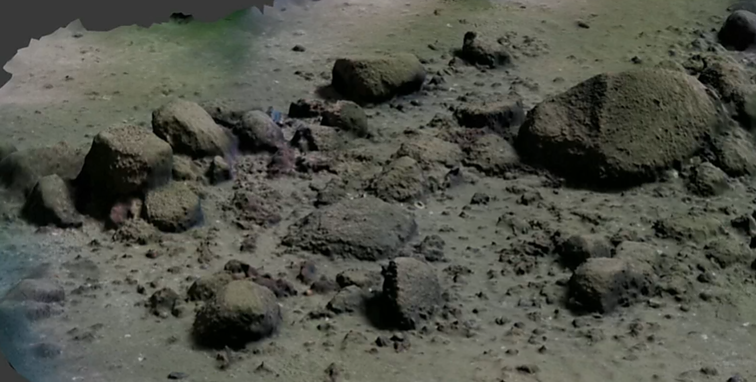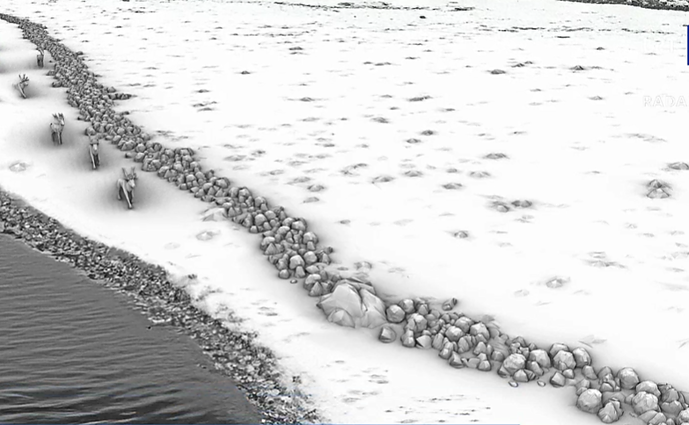Geologists have discovered a 970 meter long megastructure of linearly human made stones, located 21 meters deep on the seafloor of Mecklenburg Bay in the Baltic Sea.
Built in the early Mesolithic period around 10.000 – 11.000 years ago, the wall stretches for almost a kilometer and is made up of larger boulders combined with smaller stones the size of tennis balls and soccer balls. There are more than 1500 rocks in total.
Scientists emphasize that such a structure could not have arisen naturally or been created in modern times.
According to a study published in the PNAS, the megastructure was built by Stone Age hunter gatherers to hunt seasonally migrating herds of Eurasian reindeer (Rangifer tarandus) in the sparsely vegetated post-glacial period.
Similar structures, known as drive lanes, are used to change the direction of movement, allowing animals to be easily trapped in a bottleneck and killed. In the case of Mecklenburg Bay, this bottleneck could be between the adjacent lake shore and the wall, or even inside the lake.



“Barring natural processes, the stone wall could only have formed after the end of the last ice age, at a time when the area was not yet flooded by the Baltic Sea,” said Marcel Bradtmöller from the University of Rostock.
“The total population in northern Europe at this time was probably less than 5000 people. One of their main food sources was herds of reindeer, which migrated seasonally across the sparsely vegetated post-glacial landscape. The discovery itself is very old, very big. We’ve never seen anything like this before. It is important that we do interdisciplinary research. We have the possibility to work with a large team, so we can understand things better using different methods.”
According to the researchers, the discovery is of great scientific importance, not only because it is the oldest known human structure found in the Baltic Sea, but also because it provides new insights into the subsistence patterns of the first hunter gatherer communities in the region.
Further study of the stone wall and seafloor will involve the use of side-scan sonar, sediment echo sounder and multi-beam echo sounder. There are also plans for underwater archaeologists from the University of Rostock to explore the stone wall and its surroundings in search of archaeological artifacts that could help better understand the significance of the structure.
Cover Photo Credit : Michał Grabowski
